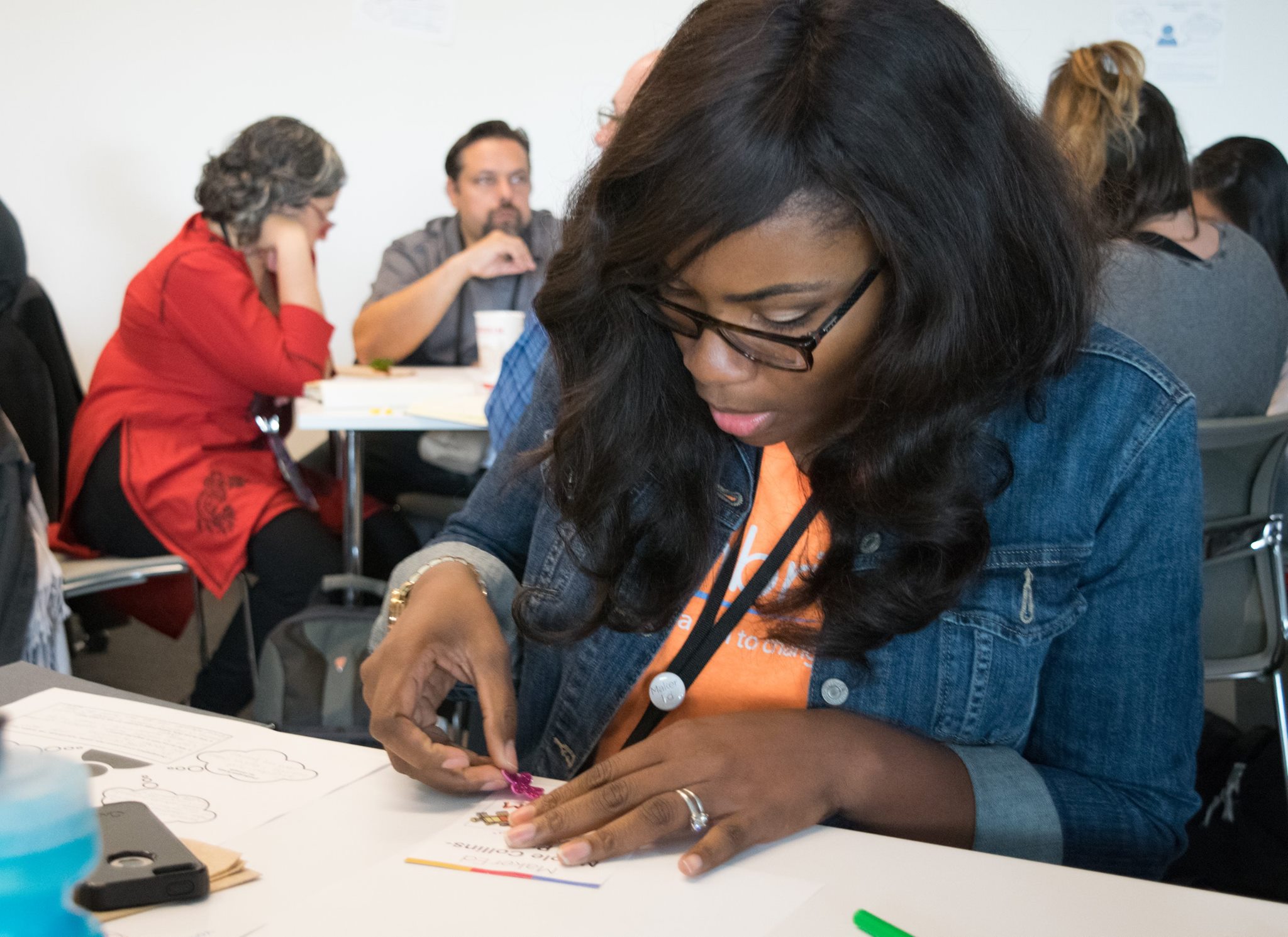 Techbridge Girls was one of several organizations that gathered for Maker Ed’s 3rd Annual Maker Educator Convening last month in San Francisco, CA. In this blog post, Techbridge CEO Nikole Collins-Puri, discusses the mission of the organization, why including girls from low-income communities in the maker movement is necessary, and how lip balm is relevant to STEM exploration and achievement.
Techbridge Girls was one of several organizations that gathered for Maker Ed’s 3rd Annual Maker Educator Convening last month in San Francisco, CA. In this blog post, Techbridge CEO Nikole Collins-Puri, discusses the mission of the organization, why including girls from low-income communities in the maker movement is necessary, and how lip balm is relevant to STEM exploration and achievement.
·······························································
For the past 17 years, Techbridge Girls has been working to break down barriers that often keep young women, particularly those of color from low-income communities, out of STEM careers and the maker movement. We work to craft a new narrative that centers this population and gives them space not just to engage with STEM and making, but to believe that they can transform the maker movement to reflect their experiences and interests. Techbridge Girls supports an ecosystem for girls from grades four through 12 to experience the full breadth of STEM education and works to ignite in them the courage to pursue a STEM degree and career.
Our model is not rocket science, but it is intentional. As the Maker Movement continues to grow and expand we also need to be intentional about what voices and perspectives are represented. As educators and thought leaders, it is our responsibility to ensure that all voices and perspectives have an opportunity to come to the table, and have their voices heard. In order to support educators in their work to develop more equitable, inclusive maker education programs and practices, we are excited to share a set of 6 strategies we’ve used at Techbridge to redefine making, and create new space and opportunities for girls.
1. Put Girls at the Center
Our girls’ voices, needs, and experiences are at the center of our program model at Techbridge Girls. Through our deep intervention and holistic approach we educate, empower, and expose our girls to resources that propel them toward a better future in careers that give them opportunities, economic mobility, and stability. Additionally, we’ve found that our engagement rate increases the more we make STEM education relevant to where our girls are in their lives. If our girls are excited about lip balm, we teach them how to make lip balm through the lens of chemical engineering. The Techbridge Girls experience is all about hands-on learning, relevance, empowerment, and immersive career exploration.
2. Redefine the Maker
We are redefining the maker every day through the work of our program. We teach our girls that a maker is more than someone interested in coding and technology. A maker does not need to resemble a white male in a hoodie and sneakers. A maker can be a curious, Oakland-born girl of color who tackles the challenge of designing a prosthetic hand for a special needs person or building a gumball machine.
3. Connect Girls to Role Models and Mentors
Through Techbridge Girls afterschool programs in the Bay Area, Greater Seattle and Washington, D.C., we not only provide hands-on activities for our girls, we connect them with role models who function as champions and co-learners. Since women and people of color are significantly underrepresented in STEM fields, it’s important that our girls have access to role models who can help them build their social capital and/or come from similar ethnic and cultural backgrounds.
4. Reframe Failure
Another important facet of our program is the idea of reframing failure. This can be especially difficult for young girls, who often focus more on perfection than on process. We teach our girls that the process of failing and the learning that comes from it is a critical and valuable skill that’s necessary to be successful in this field. Techbridge Girls creates a safe space for our girls to take risks, share their knowledge and make “glorious goofs” with others
5. Bring Making to the Community
Techbridge Girls also works to include families to continue to inspire and ignite our girls. We’ve found that it can be especially empowering for our girls to share their STEM expertise with their community. We’ve seen this time and time again at our participation in Bay Area Maker Faire and similar types of events, where our girls share what they’ve learned through our yearlong programs. Throughout the year, we encourage families to join in on science, engineering and technology activities with their girls and bring what they learn into the household.
6. Elevate Girls Into Leadership Positions
At Techbridge Girls, we empower our girls so they understand that they belong, they can thrive, and that they can lead and change the face of this movement. A strong public presence is key to building leadership skills, so we create opportunities for our girls to have public speaking roles. At the recent Bay Area Maker Faire, three of our girls took the stage to share their experience in Techbridge Girls and articulated why programs like these are so crucial to building their confidence. Another way we hone leadership skills is by giving our girls the freedom to develop and design projects of their own choosing.
It was a thrill to attend the Maker Educator Convening in May and to see the ways in which equity is becoming a priority for the maker educator community. This work must continue to be at the forefront of the maker movement because if the voices, needs, experiences, and perspectives of girls, especially girls of color from low-income communities, are not actively built into the maker movement’s narrative, they will continue to be an afterthought and get left behind.
···················································································································································
Here are some additional resources to explore if you’d like to learn more about diversity & inclusion in maker education:
- Changing the Game for Girls in STEM: Findings on High Impact Programs and System-Building Strategies, a whitepaper from Techbridge Girls
- Nikole’s quick talk at the 3rd Annual Maker Educator Convening
- Ask a Maker Educator with Suzette Duncan, “Developing More Inclusive Maker Education Practices”
We want to hear from you! How have you made your classroom, library, or makerspace more welcoming to girls of color? Share your thoughts, inspirations and projects on social media using #MakerEd. Be sure to tag us @MakerEdOrg in your posts!
···················································································································································

About the Author
Nikole is the CEO of Techbridge Girls, an organization in Oakland, CA that provides opportunities in STEM for girls. Before joining Techbridge Girls, Nikole served as Chief Strategist of Philanthropic Initiatives at the Women’s Foundation of California. There, she oversaw program strategy, grant making and cultivated individual and institutional funders that resulted in over $1.5 million in charitable gifts annually. Nikole’s prior experiences include leading policy advocacy efforts at the College Board as their Director of Outreach, and nearly 10 years with AT&T where she held the position of Diversity and Inclusion Director. When not championing equity in STEM Education and empowering girls, particularly girls of color from low-income households, Nikole enjoys CrossFit, the art of shoe shopping and spending time with her two year old son, Xavier and husband, Ashwin.
